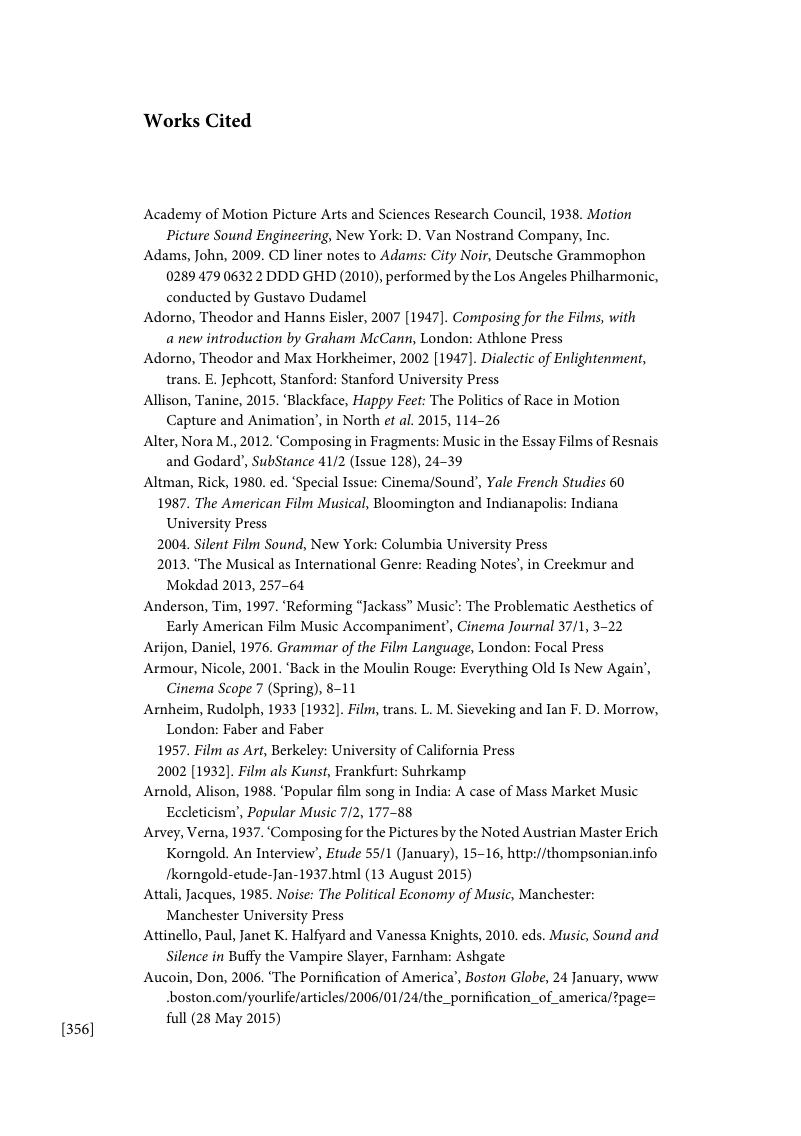Book contents
- The Cambridge Companion to Film Music
- The Cambridge Companion to Film Music
- Copyright page
- Dedication
- Contents
- Figures
- Music Examples
- Tables
- Notes on Contributors
- Acknowledgements
- Introduction
- Part One Making Film Music
- Part Two Approaching Film Music
- Part Three Genre and Idiom
- Part Four Music in World Cinemas
- Works Cited
- Reference Index of Films and Television Programmes
- General Index
- Cambridge Companions to Music
- References
Works Cited
Published online by Cambridge University Press: 20 January 2017
- The Cambridge Companion to Film Music
- The Cambridge Companion to Film Music
- Copyright page
- Dedication
- Contents
- Figures
- Music Examples
- Tables
- Notes on Contributors
- Acknowledgements
- Introduction
- Part One Making Film Music
- Part Two Approaching Film Music
- Part Three Genre and Idiom
- Part Four Music in World Cinemas
- Works Cited
- Reference Index of Films and Television Programmes
- General Index
- Cambridge Companions to Music
- References
Summary

- Type
- Chapter
- Information
- The Cambridge Companion to Film Music , pp. 356 - 384Publisher: Cambridge University PressPrint publication year: 2016



